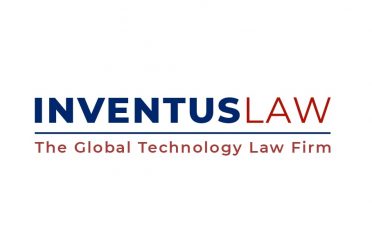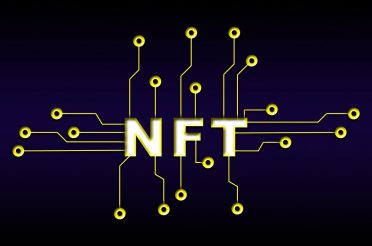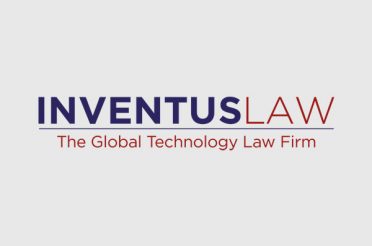With the recent turmoil within the Board and management of India’s top corporations, most notably TATA Sons and Flipkart, it would behoove India company founders to better understand legal issues relating to corporate governance, roles and responsibilities, and how to obtain and retain control over the companies they start up.

While no one may have bothered to read legal documents when the founders/management was busy raising outside financings, during times of conflict the legal rights of the investors versus founders/management become critical in determining who wins and keeps control of the company and the business going forward.

The basic legal structure of a corporation that each founder must understand is that there are three major stakeholders in any corporation:
(1) Board of Directors
The Board of Directors is the principal governing body for a company. Members of the Board are responsible for the overall policy decisions of the business. All major decisions relating to the business need to be approved by the Board. These include, decisions to issue stock in the corporation; sell the business or liquidate; take on any material liability; incur debt; acquire other businesses or other material assets; and, most importantly for this discussion, the decision to hire and fire the Chief Executive Officer and other executive officers of the corporation.
The Board should not run a company or get involved in the day-to-day operations or decision making of the Company. That is the role of the CEO and the senior executive management of the Company.
Members of the Board are fiduciaries of the owners of the corporation, i.e, the shareholders, and their number one priority should always be to protect the interests of the Company’s shareholders. The best interest of the shareholders in any corporation [other than non-profit companies] is to increase the value of the Company and its share price. Therefore, the number one priority of the members of the Board is to keep the Company and management on track to maximizing shareholder value.
Many times, this can come in conflict with the desire of the senior management to invest in areas that may result in short-term value erosion but are likely to increase long-term value and prospects of the venture.
Some evidence of this conflict can be seen in the Indian e-commerce where the CEO and executive management have been focused almost entirely on increasing the user base even at the cost of profitability.
On the one hand, the senior management’s focus on increasing user traction is meant to increase the long-term valuation of the business, while on the other, the outside investor-shareholders are beginning to get impatient with the time it is taking for the business to become profitable, or at the very least stop the hemorrhaging of increasing expenses and losses.
(2) Shareholders
Shareholders are the “owners” of the corporation. They have ownership rights in the business, based on the percentage ownership they hold in the Company. In a typical scenario, each share in the Company, common or preferred, represents one vote. However, holders of preferred stock [issued to outside investors] typically negotiate additional rights, like liquidation rights, veto rights, and rights to Board seats, along with exit rights, despite not owning the majority of the Company’s share ownership. Some of the important rights that the preferred investors negotiate as they relate to control and decision making are liquidation preference, voting rights, and exit rights.
A. Liquidation preference. Liquidation preference rights allow investors to receive a priority in the proceeds in the event of a liquidation of the Company. Many times, the outside investors holding preferred stock negotiate and obtain a “participating” liquidation preference, which could result in their obtaining a higher pro rata percentage of the proceeds than the other shareholders. Therefore, whether or not the preferred holders have a participating preferred liquidation preference becomes as valuable as negotiating the actual valuation at which these investors invest in.
Let’s take a simple hypothetical example for illustrating how important the liquidation preference issue can be.
Let’s say that a company has raised an aggregate of $100MM in outside financing and the investors collectively hold 50 percent of the company’s equity. And, for the sake of simplicity, let’s assume that the rest of the 50 percent equity is held by the founders and management [no option or warrants, etc.]. Let’s now take a couple of scenarios in the event the Company gets sold for $200MM:
- Scenario 1: Investors have a liquidation preference of 1x, non-participating. In this scenario, the investors will get their $100MM [50 percent of their equity ownership, or by exercising their liquidation preference and getting their $100MM investment back (assuming no accrued and outstanding dividends)]. The founders/management will get the remaining $100MM, a very good result for them in most cases.
- Scenario 2: Investors have a liquidation preference of 2x, non-participating. In this scenario, the investors will get their $200MM by exercising their liquidation preference and getting 2x of their $100MM investment back [with accrued and outstanding dividends, if any]. And, the founders/management will get zero money, after building the company to a $200MM valuation.
- Note: If the investors had a 3x liquidation preference, then the Company would need to be sold for $300MM before any founders/management get paid, and so on.
- Scenario 3: Investors have a liquidation preference of 1x, fully participating. In this scenario, the investors will first get their $100MM out; and then participate fully for the remainder to get an additional 50 percent of the remaining $100MM. Therefore, investors will get an aggregate of $150MM, while the founders/management will get the remaining $50MM, a big delta down from Option 1.
- Note: This result becomes even more acute for the founders if the Company is sold for a lower amount: for example, if the company is sold for $110MM, the investors get $100MM plus $5MM, and the founders/management only get an aggregate of $5MM.
We can look at many other hypotheticals, including where the Company is sold for a lot more, let’s say, $1billion, but the above is meant to highlight the friction that may be caused where the investors, particularly in Scenario 2 and even possibly in Scenario 3, may be more willing to sell the company than the founders/management. And, much of that will be dependent on how the liquidation preferences are stacked against the common stockholders.

B. Voting rights. Members of the Board are elected by the shareholders of the Company and serve at the pleasure of the shareholders. The shareholders also get to vote on many of the material actions relating to the Company, including any amendment to the charter documents [needed for further fund raising], the appointment of Directors, sale or dissolution of the business, etc. In the absence of any specific agreement, a majority of the shareholders get to make these decisions.
In most instances, however, outside institutional investors, despite not having a majority ownership in the Company and as a condition to their investment in the company, negotiate a right to take certain decisions, like the right to appoint one or more members of the Board and the right to sell and dissolve the business in certain circumstances.
In these cases, it becomes critical for the founders to understand how these rights will play out in the event of a falling out between investors and founders. For example, to the extent the founders do not retain control of the Board, they run the risk of losing control of the Company, including their own position which is many times tied to their performance of services for the company; as discussed earlier, the Board can elect to terminate the employment of executive management.
C. Drag Along and exit rights. Many times, investors negotiate drag along and exit rights. These allow them to force the sale of a company even when the majority of shareholders and/or management may not be in favor of such a sale; for example, in the case of Scenario 2 listed under Liquidation preference, above. It is essential for founders to understand what these rights are so that they don’t find themselves and the company in a situation where the company is being forced to be sold without any say in the outcome. For example, if the investors have investment fatigue and the liquidation preference allows them to recover their original investment [Scenario 1], or even more [Scenarios 2 and 3], then they are likely to exercise their exit rights for a price that may result in the founders/management getting very little or even nothing in return.
(3) Executive management
The Chief Executive Officer (“CEO”) is the head of the Company’s executive team; other members are typically the Chief Technology Officer, Chief Financial Officer, and Chief Marketing Officer. The CEO, along with the rest of the executive management team, are responsible for the day-to-day management and operations of the business. The CEO reports to the Board; many times, there is a conflict between the CEO and the Board as to who the other members of the executive management report to.
Even though the other officers may report to the CEO, especially while matters are amenable between the CEO and the Board in order for smooth functioning of the corporation, legally the Board has the right to instruct the executive officers, and hire and fire the executive officers, as well as set their compensation, equity, and other terms of employment.
The relationship between the CEO and Board can also get murky if the CEO decides to control and manage the Board; this is particularly true when the company has “outside” board members, i.e., members of the Board not appointed by the CEO/founders. Where a “strong founder” may expect the Board to rubber stamp all of his/her decisions [think Steve Jobs], the members of the Board could end up breaching their fiduciary obligations to the shareholders if they allow for the CEO to make all the decisions without any oversight and decision-making from the Board.
In order to provide maximum harmony, the engagement of the founders/management must be structured such that the Board gets to have the final say in the material actions, including the performance and retention or firing of the CEO/senior management; on the other hand, some limited investor members on the Board should not have the sole authority to make decisions that affect all the Board members and shareholders.
Founders can protect themselves from this possibility by either structuring the Board in a manner that it represents a broad shareholding and/or protect their own interests such that in the event of a falling out with the Board their personal interests are protected, by negotiating acceleration of their stock, retaining the right to certain board seats for the common stockholders [which the founders are still likely to control] without constraining them to their role and performance as CEO/executive officers.







Leave a Reply